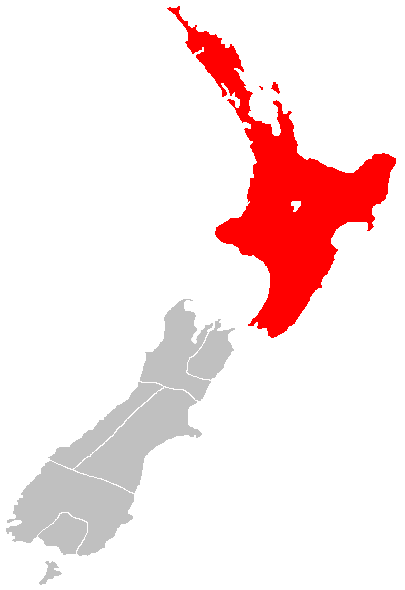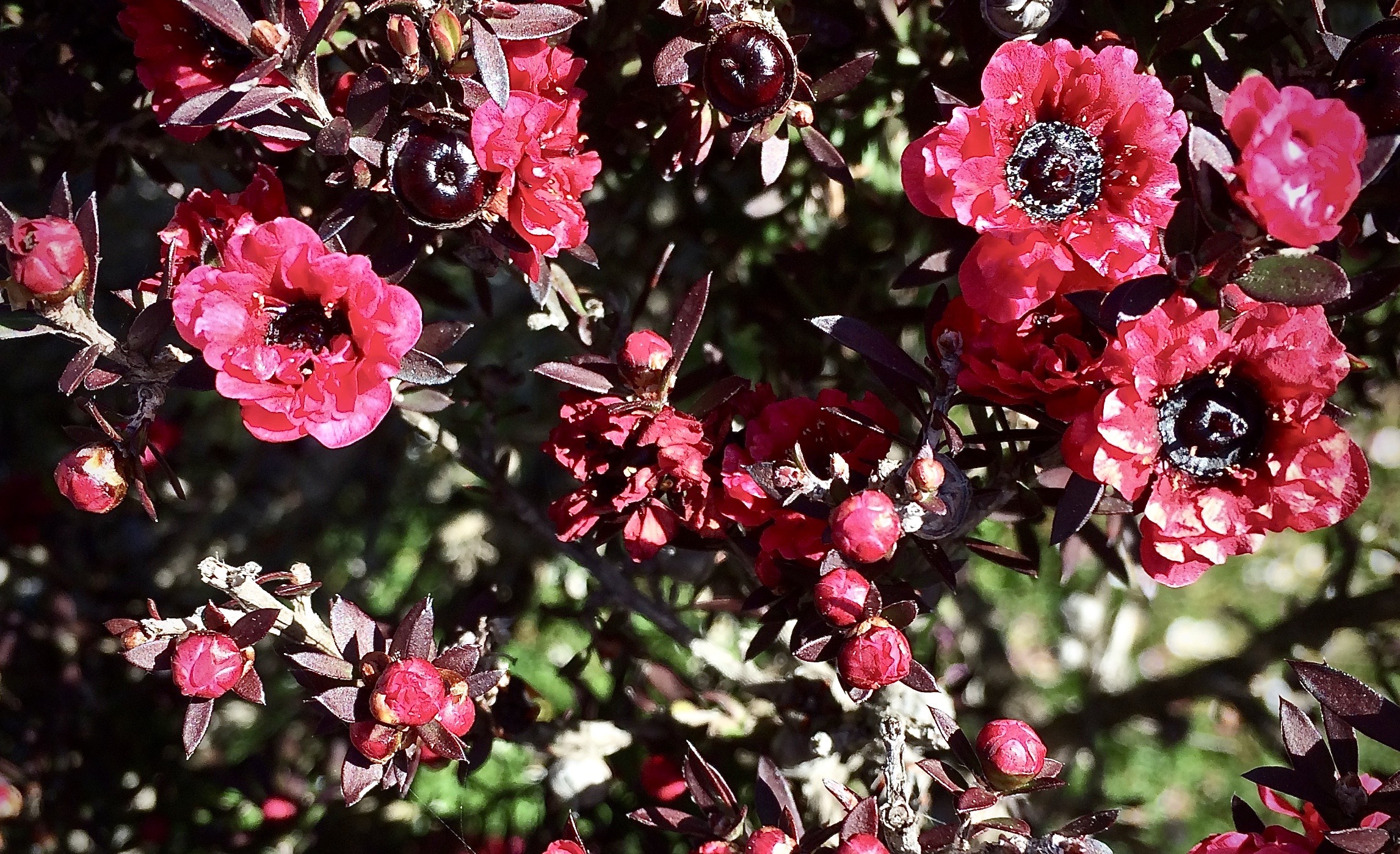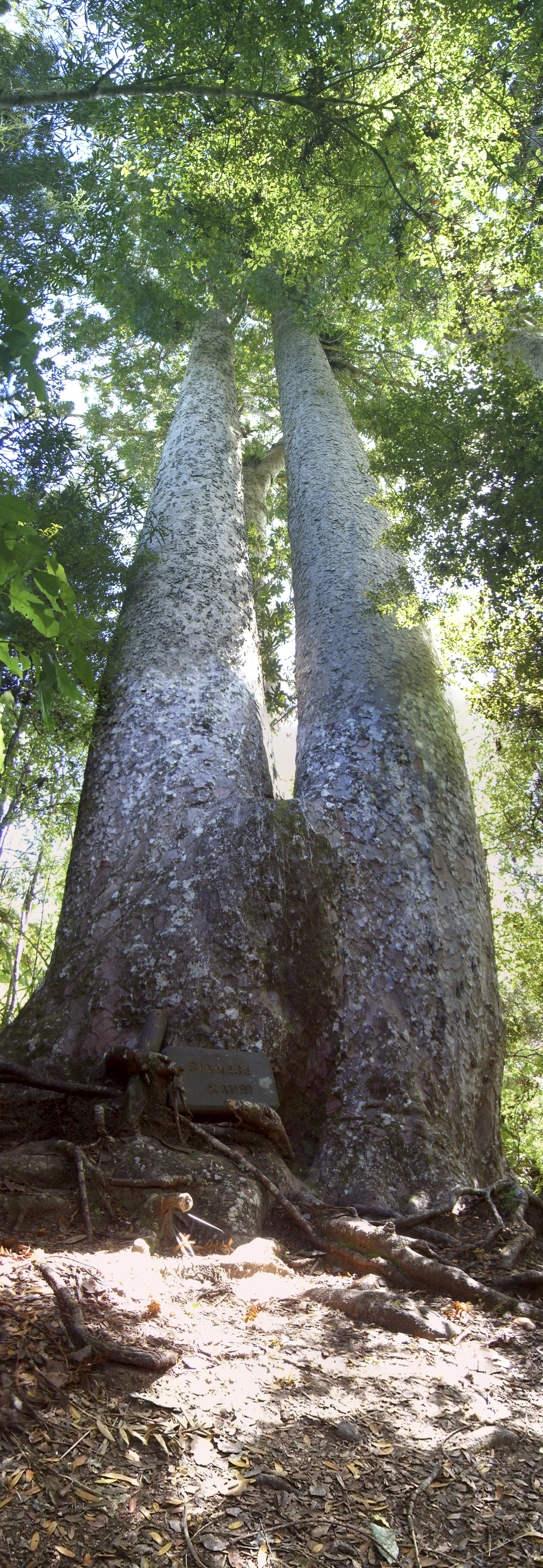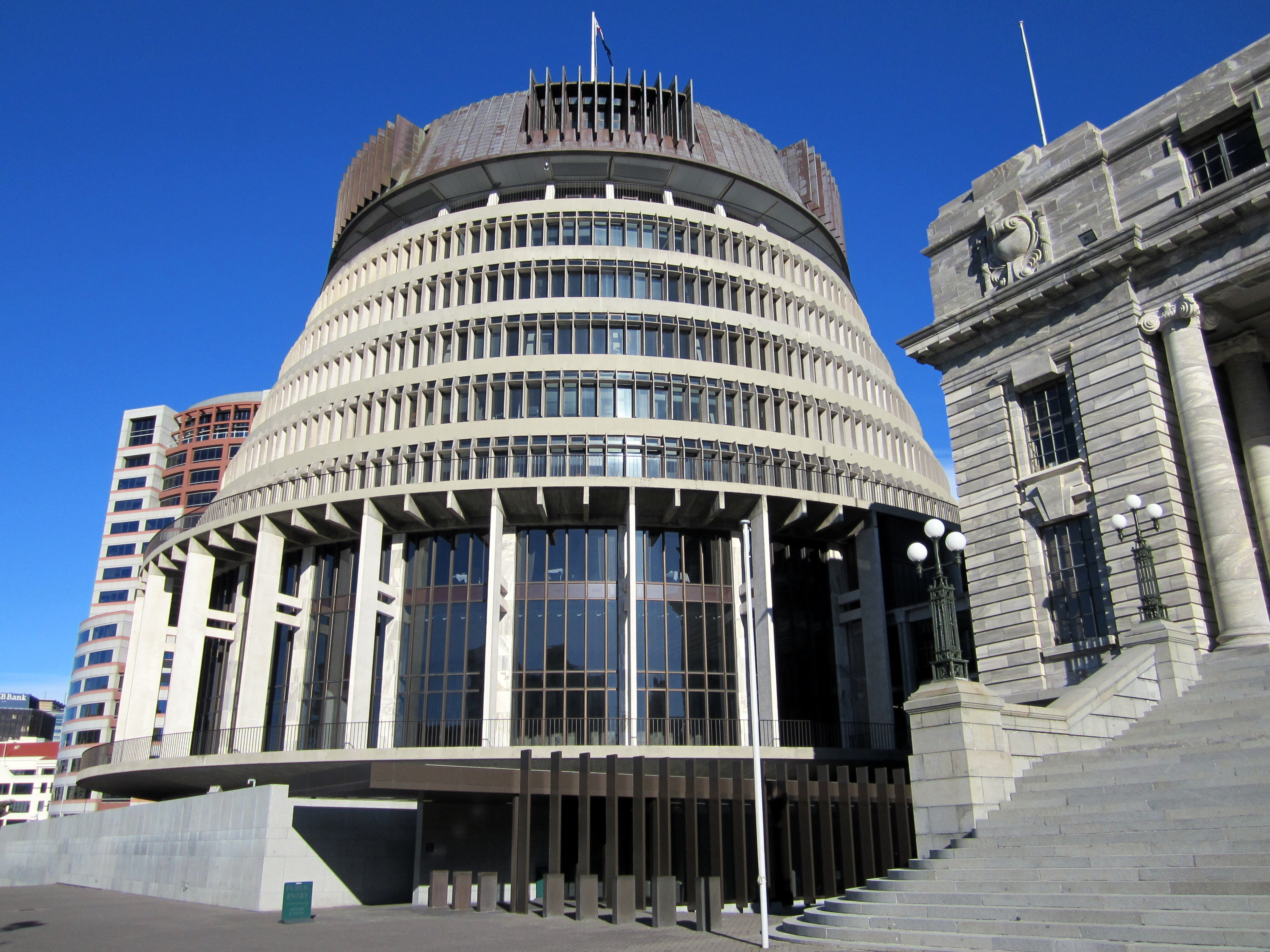|
Mount Donald McLean
Te Rau-o-te-Huia / Mount Donald McLean is a hill in the Waitākere Ranges of the Auckland Region of New Zealand's North Island. It is located to the south of the ranges, near the township of Huia. It is the highest peak of the Waitākere Ranges that borders the Manukau Harbour. Geography and geology The hill is a peak in the Waitākere Ranges, approximately northwest from Little Huia. The hill is the source for the south-flowing Baker Stream, and some of the tributaries of the east-flowing Marama Stream. The hill is accessible by Mt Donald McLean Road along Whatipu Road, or by two walking tracks: the Puriri Ridge Track and the Donald McLean Track. A prominent viewing platform can be found at the summit, from which Mount Taranaki can be seen on a clear day. Te Rau-o-te-Huia / Mount Donald McLean is a part of the Waitākere volcano, which first began erupting 23 million years ago, during the Miocene era. Most of the volcano had eroded by five million years ago, except for th ... [...More Info...] [...Related Items...] OR: [Wikipedia] [Google] [Baidu] |
North Island
The North Island, also officially named Te Ika-a-Māui, is one of the two main islands of New Zealand, separated from the larger but much less populous South Island by the Cook Strait. The island's area is , making it the world's 14th-largest island. The world's 28th-most-populous island, Te Ika-a-Māui has a population of accounting for approximately % of the total residents of New Zealand. Twelve main urban areas (half of them officially cities) are in the North Island. From north to south, they are Whangārei, Auckland, Hamilton, Tauranga, Rotorua, Gisborne, New Plymouth, Napier, Hastings, Whanganui, Palmerston North, and New Zealand's capital city Wellington, which is located at the south-west tip of the island. Naming and usage Although the island has been known as the North Island for many years, in 2009 the New Zealand Geographic Board found that, along with the South Island, the North Island had no official name. After a public consultation, the board offi ... [...More Info...] [...Related Items...] OR: [Wikipedia] [Google] [Baidu] |
Veronica Bishopiana
''Veronica bishopiana'', the Waitākere rock koromiko, is a flowering plant belonging to the family Plantaginaceae. It is native to West Auckland in New Zealand, and was first described by Donald Petrie in 1926.Petrie (1926), In: Trans. & Proc. N. Z. Inst. 56: 15 Description ''Veronica bishopiana'' is a low spreading shrub that grows up to one metre tall. While similar to ''Veronica obtusata'' in appearance, ''Veronica bishopiana'' tends to be larger, and has distinctive maroon-green leaves. The shrub has white and mauve-coloured flowers, with the mauve colour often only evident in the youngest buds of the plant. Taxonomy It was named by Donald Petrie in 1926, first described as a hybrid, ''Veronica × bishopiana''. It was transferred the genus Hebe in 1966 by ED Hatch, but has since been reclassified again as a species of veronica. The species was named for Titirangi resident John Joseph Bishop, who first recognised ''Veronica bishopiana'' as a distinct species and cult ... [...More Info...] [...Related Items...] OR: [Wikipedia] [Google] [Baidu] |
Rangitoto
Rangitoto Island is a volcanic island in the Hauraki Gulf near Auckland, New Zealand. The wide island is a symmetrical shield volcano cone, reaching a height of . Rangitoto is the youngest and largest of the approximately 50 volcanoes of the Auckland volcanic field, with its present form related to an eruption about 600 years ago and covering an area of . It is separated from the mainland of Auckland's North Shore by the Rangitoto Channel. Since World War II, it has been linked by a causeway to the much older, non-volcanic Motutapu Island. is Māori for 'Bloody Sky',What happened to local Maori? (from the Rangitoto page on the website) with the name coming from the full phra ... [...More Info...] [...Related Items...] OR: [Wikipedia] [Google] [Baidu] |
Auckland City Centre
The Auckland Central Business District (CBD), or Auckland city centre, is the geographical and economic heart of the Auckland metropolitan area. It is the area in which Auckland was established in 1840, by William Hobson. It is New Zealand's leading financial hub, and the centre of the country's economy; the GDP of the Auckland Region was $126.917 billion in the year ending March 2022. The CBD is one of the most densely developed places in New Zealand, with many commercial and some residential developments packed into a space of only . The area is made up of the city's largest concentration of skyscrapers and businesses. Bounded by several major motorways and by the harbour coastline in the north, it is surrounded further out by mostly suburban areas; it is bounded on the North by Waitematā Harbour, east by Parnell, southeast by Grafton, south by Mount Eden, southwest by Newton, west by Freemans Bay and northwest by Viaduct Harbour. Geography Located on the northern shore ... [...More Info...] [...Related Items...] OR: [Wikipedia] [Google] [Baidu] |
Leptospermum Scoparium
''Leptospermum scoparium'', commonly called mānuka, () mānuka myrtle, New Zealand teatree, broom tea-tree, or just tea tree, is a species of flowering plant in the myrtle family Myrtaceae, native to New Zealand (including the Chatham Islands) and south-east Australia. Its nectar produces Mānuka honey. Description Mānuka is a prolific shrub-type tree and is often one of the first species to regenerate on cleared land. It is typically a shrub growing to tall, but can grow into a moderately sized tree, up to or so in height. It is evergreen, with dense branching and small leaves long and broad, with a short spine tip. The flowers are white, occasionally pink, – rarely up to – in diameter, with five petals. The wood is tough and hard. Mānuka is often confused with the related species kānuka ('' Kunzea ericoides'') – the easiest way to tell the difference between the two species in the field is to feel their foliage – mānuka leaves are prickly, while kānuk ... [...More Info...] [...Related Items...] OR: [Wikipedia] [Google] [Baidu] |
Agathis Australis
''Agathis australis'', commonly known by its Māori name kauri (), is a coniferous tree in the family ''Araucariaceae'', found north of 38°S in the northern regions of New Zealand's North Island. It is the largest (by volume) but not tallest species of tree in New Zealand, standing up to 50 m tall in the emergent layer above the forest's main canopy. The tree has smooth bark and small narrow leaves. Other common names to distinguish ''A. australis'' from other members of ''Agathis'' are southern kauri and New Zealand kauri. With its novel soil interaction and regeneration pattern it can compete with faster growing angiosperms. Because it is such a conspicuous species, forest containing kauri is generally known as kauri forest, although kauri need not be the most abundant tree. In the warmer northern climate, kauri forests have a higher species richness than those found further south. Kauri even act as a foundation species that modify the soil under their canopy to c ... [...More Info...] [...Related Items...] OR: [Wikipedia] [Google] [Baidu] |
Pākehā
Pākehā (or Pakeha; ; ) is a Māori term for New Zealanders primarily of European descent. Pākehā is not a legal concept and has no definition under New Zealand law. The term can apply to fair-skinned persons, or to any non- Māori New Zealander. Papa'a has a similar meaning in Cook Islands Māori. Historically before the arrival of other ethnic groups the word Māori meant 'ordinary' or 'normal'. The arrival of Europeans led to the formation of a new term to distinguish the self-regarded 'ordinary' or 'normal' Māori from the new arrivals. The etymology of the word ''Pākehā'' remains unclear, but the term was in use by the late-18th century. In December 1814 the Māori children at Rangihoua in the Bay of Islands were "no less eager to see the ''packaha'' than the grown folks". In Māori, plural noun-phrases of the term include (the definite article) and (the indefinite article). When the word was first adopted into English, the usual plural was 'Pakehas'. However, ... [...More Info...] [...Related Items...] OR: [Wikipedia] [Google] [Baidu] |
Māori People
The Māori (, ) are the indigenous Polynesian people of mainland New Zealand (). Māori originated with settlers from East Polynesia, who arrived in New Zealand in several waves of canoe voyages between roughly 1320 and 1350. Over several centuries in isolation, these settlers developed their own distinctive culture, whose language, mythology, crafts, and performing arts evolved independently from those of other eastern Polynesian cultures. Some early Māori moved to the Chatham Islands, where their descendants became New Zealand's other indigenous Polynesian ethnic group, the Moriori. Initial contact between Māori and Europeans, starting in the 18th century, ranged from beneficial trade to lethal violence; Māori actively adopted many technologies from the newcomers. With the signing of the Treaty of Waitangi in 1840, the two cultures coexisted for a generation. Rising tensions over disputed land sales led to conflict in the 1860s, and massive land confiscations, to ... [...More Info...] [...Related Items...] OR: [Wikipedia] [Google] [Baidu] |
Donald McLean (New Zealand Politician)
Sir Donald McLean (27 October 1820 – 5 January 1877) was a 19th-century New Zealand politician and government official. He was involved in negotiations between the settler government and Māori from 1844 to 1861, eventually as Native Secretary and Land Purchase commissioner. He was one of the most influential figures in Māori-Pākehā relations in the mid-1800s and was involved in the dispute over the "Waitara Purchase", which led up to the First Taranaki War. Early life He was born on the Hebridean island of Tiree, and came to New Zealand via Australia in 1840. He married Susan Douglas Strang, daughter of the registrar of the Supreme Court in Wellington, Robert Strang, on 28 August 1851. She died after giving birth to their son Douglas in December 1852 and her death deeply affected McLean; he never remarried. Political career McLean was involved in negotiations between the settler government and Māori from 1844 to 1861, eventually as Native Secretary and Land Purchase co ... [...More Info...] [...Related Items...] OR: [Wikipedia] [Google] [Baidu] |
New Zealand Government
, background_color = #012169 , image = New Zealand Government wordmark.svg , image_size=250px , date_established = , country = New Zealand , leader_title = Prime Minister Jacinda Ardern , appointed = Governor-General , main_organ = , ministries = 32 ministries and departments , responsible = House of Representatives , budget = 119.3 billion (2018–19) , address = The Beehive and other locations across Wellington , url = The New Zealand Government ( mi, Te Kāwanatanga o Aotearoa) is the central government through which political authority is exercised in New Zealand. As in most other parliamentary democracies, the term "Government" refers chiefly to the executive branch, and more specifically to the collective ministry directing the executive. Based on the principle of responsible government, it operates within the framework that "the Queen reigns, but the government rules, so long as it has the support of the House of Representatives".Sir Kenneth Keith, q ... [...More Info...] [...Related Items...] OR: [Wikipedia] [Google] [Baidu] |
Huia
The huia ( ; ; ''Heteralocha acutirostris'') is an extinct species of New Zealand wattlebird, endemic to the North Island of New Zealand. The last confirmed sighting of a huia was in 1907, although there was a credible sighting in 1924. It was already a rare bird before the arrival of Europeans, confined to the Ruahine, Tararua, Rimutaka and Kaimanawa mountain ranges in the south-east of the North Island. It was remarkable for having the most pronounced sexual dimorphism in bill shape of any bird species in the world. The female's beak was long, thin and arched downward, while the male's was short and stout, like that of a crow. Males were long, while females were larger at . The sexes were otherwise similar, with orange wattles and deep metallic, bluish-black plumage with a greenish iridescence on the upper surface, especially about the head. The tail feathers were unique among New Zealand birds in having a broad white band across the tips. The birds lived in forest ... [...More Info...] [...Related Items...] OR: [Wikipedia] [Google] [Baidu] |
Kāinga
A kāinga ( Southern Māori ''kaika'' or ''kaik'') is the traditional form of village habitation of pre-European Māori in New Zealand. It was unfortified or only lightly fortified, and over time became less important to the well-defended pā. Description Kāinga were generally unfortified or only lightly fortified, as opposed to the well-defended pā. They were generally coastal, and often found near to a river mouth. The settlement was generally occupied by members of one '' hapū'' (sub-tribe), which would identify itself with the nearest mountain and river (even in modern Māori, when meeting someone new, "what is your mountain?" is not an unusual question). Kāinga were often regarded as only semi-permanent settlements, and they were often abandoned. Reasons for abandonment included invasion by other iwi or resource shortages. Traditionally, Māori were often semi-nomadic, with entire communities moving at harvest or to hunt, using the kāinga as a stable home base. An ent ... [...More Info...] [...Related Items...] OR: [Wikipedia] [Google] [Baidu] |








